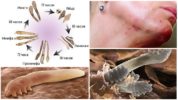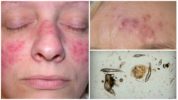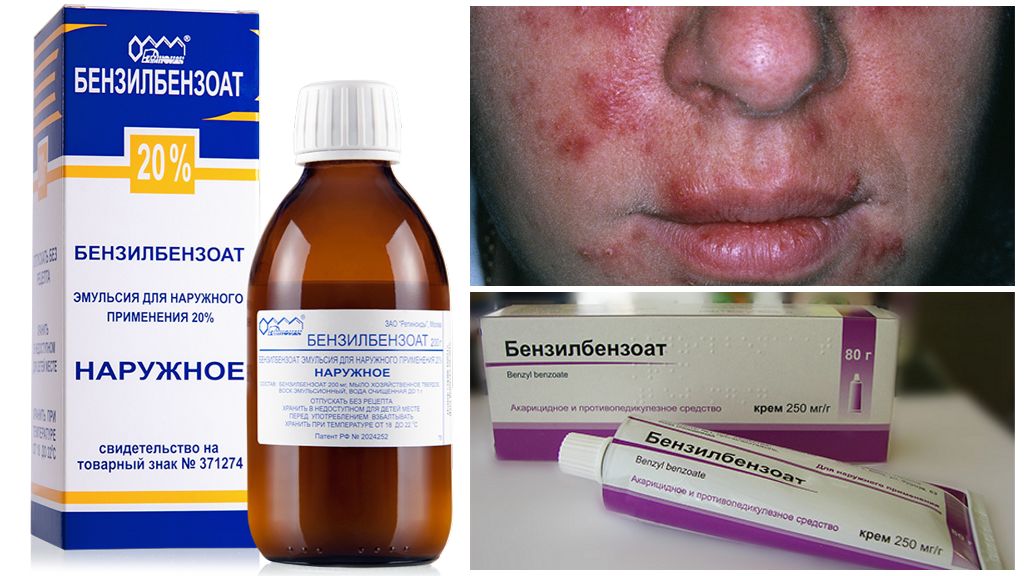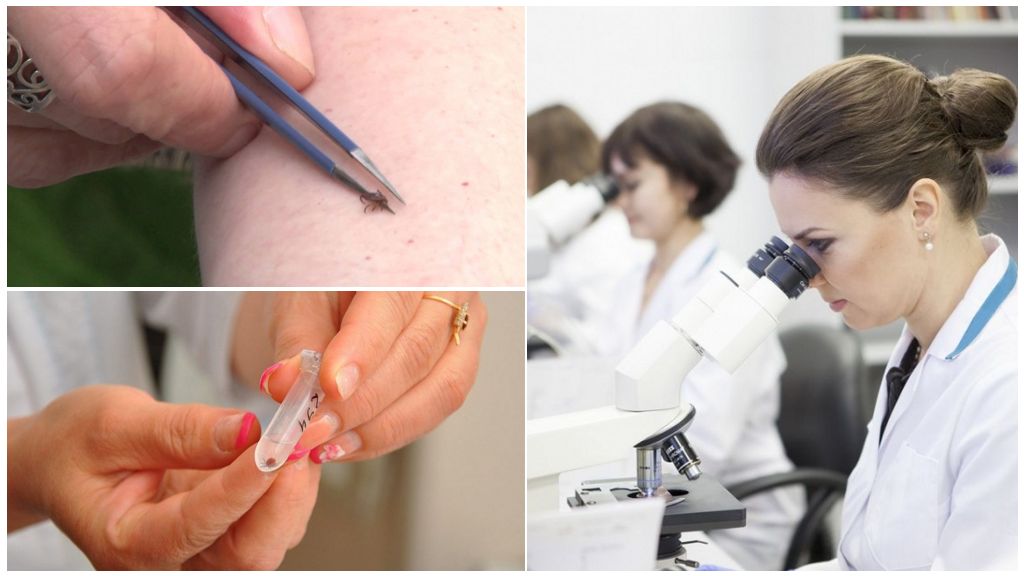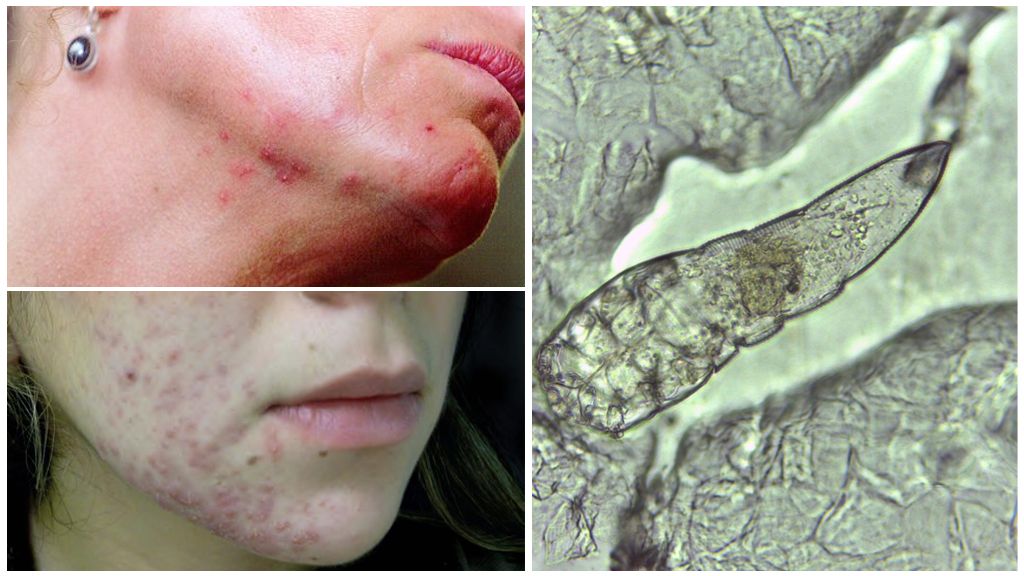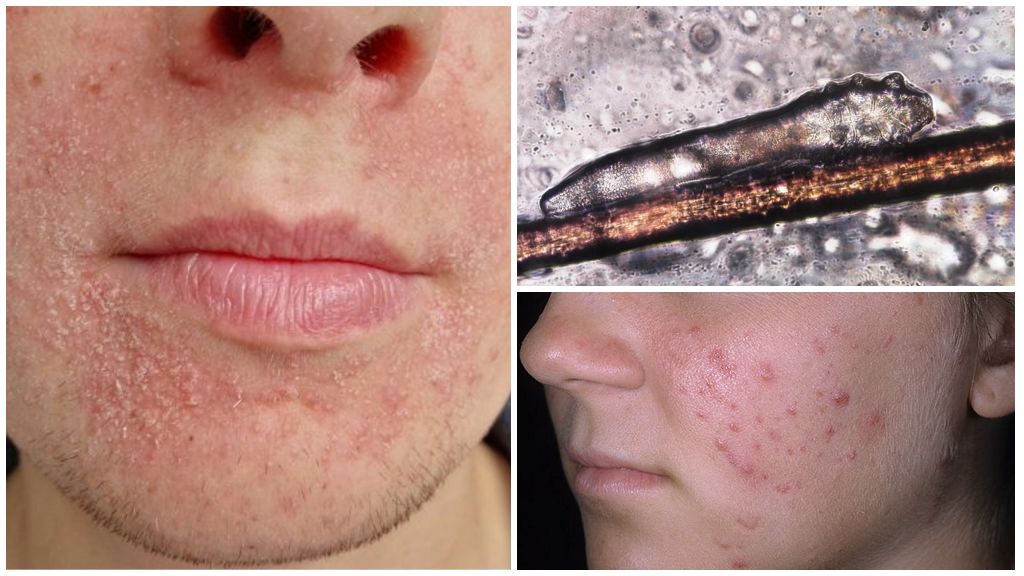- Demodex tick at different stages of development
- Subcutaneous tick
- Preparations for the treatment of demodicosis
- Folk recipes for the treatment of demodicosis
A subcutaneous tick on the face provokes an unpleasant disease - demodicosis. It is characterized by the appearance of acne, red spots, peeling, itching. Infection can occur anywhere, but for the parasite to settle under the skin, special conditions are required. The disease affects people of any age, often during hormonal changes - transitional age, menopause, pregnancy.
The appearance of the parasite
Most often, acne gland or mite gland appears on the skin, demodex. Outwardly, it looks like a worm of white, translucent color. Body size does not exceed 0.4 mm. Moving, fixing is carried out due to four pairs of limbs. The first are the oral apparatus. On the remaining legs there are sharp claws. A photo of a subcutaneous tick on the face can be seen below.
The parasite is localized in the area of the sebaceous glands, hair follicles. It affects the skin of the face, less often the neck, chest, back, shoulders. In one hair follicle, about 4 iron glands are concentrated. The main sign of the development of demodicosis is acne.
A skin tick on the face goes through several stages of development.
- It all starts with an egg of microscopic size. The female lays them on the surface of the epidermis.
- After a few days, it transforms into a larva with three pairs of limbs, the absence of respiratory, genital openings.
- The next stage is the nymph, which goes through several stages of its development. On the last appears a fourth pair of limbs, genitals.
- The final formation of the reproductive system is completed in adult ticks - the imago.
A photo of the tick on the face at different stages of development is presented below.
On a note!
A subcutaneous tick is present on the skin of each person, but does not cause discomfort, is completely invisible. Acne does not always appear. And only under certain circumstances, it begins to actively multiply, which causes a difficult to treat disease - demodecosis.
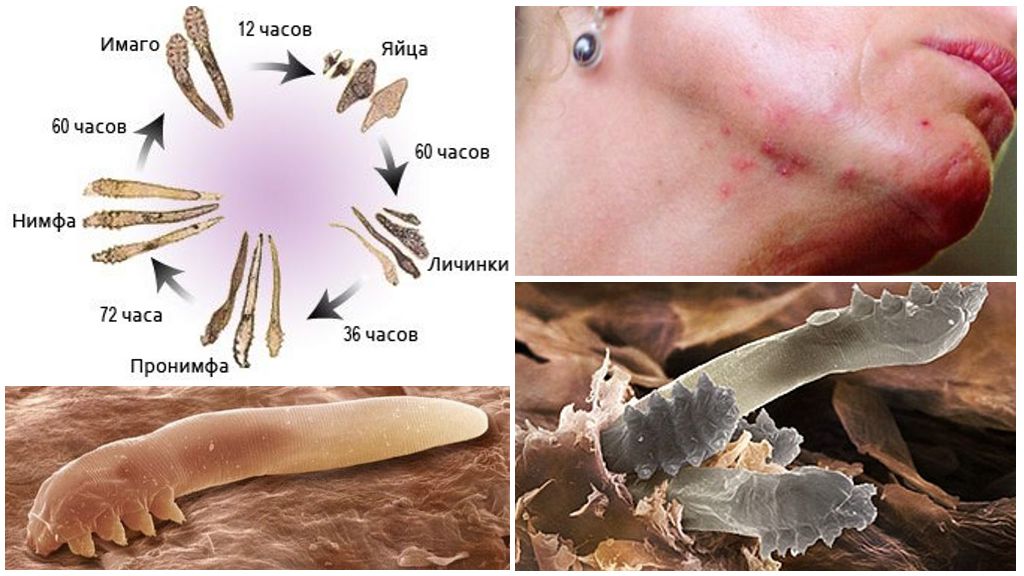
Infection
Infection occurs directly from a sick person. This can happen during touching the face, hugs, kisses, as well as through infected objects - a towel, napkins.
Demadecotic mite does not have the opportunity to fully settle on the skin if there are no appropriate conditions. The pest eats particles of sebum, so an environment favorable to it is an excessive amount of fat. The main causes of parasites - malfunctioning of the sebaceous glands, weak immunity.
There are many contributing factors:
- chronic inflammatory processes in the digestive system;
- endocrine system diseases;
- hormonal disbalance;
- taking immunomodulators, immunostimulants, followed by impaired functioning of the immune system;
- transferred viral, bacterial diseases;
- teenage years;
- exhaustion of the nervous system, frequent stresses, unfavorable psycho-emotional atmosphere at home, at work;
- bad habits - alcohol, smoking;
- malnutrition - frequent use of fatty, spicy, salty, sweet foods;
- violation of facial hygiene;
- poor-quality cosmetics;
- bad ecology.
On a note!
The skin mite on the face self-destructs if it has nothing to eat, that is, face hygiene is observed, there is no excess fat on the skin, the protective mechanisms work smoothly. Otherwise, the subcutaneous tick on the person’s face will actively multiply, and may spread to other parts of the body.
Symptoms of the disease
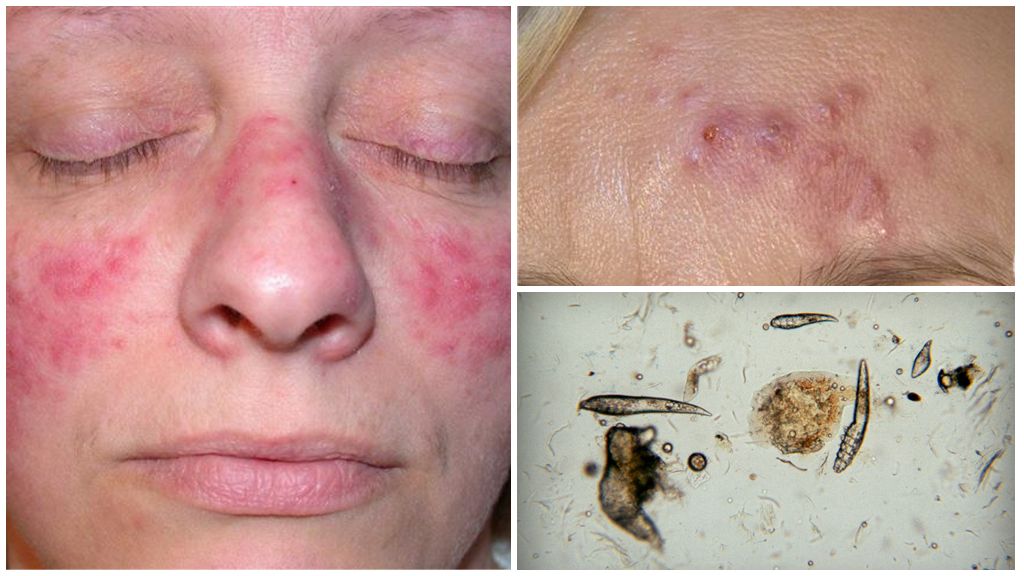
The initial stage of infection with demodicosis is almost asymptomatic. However, attentive people can find red, inflamed spots in the nasolabial folds. Outwardly, they resemble an allergy or an ordinary pimple. In such inflamed foci, the female laid eggs, from which larvae of the first age will appear in a few days.
Symptoms of a subcutaneous tick on the face:
- redness;
- increased release of fat, greasy shine;
- acne;
- inflammation;
- blushing face;
- the skin becomes loose, bumpy;
- itching, worse in the evening, present at night;
- sticky eyelashes, at the base of the scales;
- the feeling that someone is crawling under the skin, something is moving.
Acne on the face of the tick can be red, pink, even cyanotic. At the initial stage of infection, the symptoms may resemble a normal allergic reaction. For this reason, specialists often prescribe erroneous treatment or the victims themselves prescribe the wrong drugs. A living creature under the skin can be recognized by the sensation of movement, but this method does not always work. Strange sensations may appear on the nervous system.
Therapy Features
Treatment of a subcutaneous tick on the face begins with a diagnosis. It is impossible to independently determine the cause of rashes on the face, as during a routine examination by a specialist, to distinguish one skin parasite from another. To confirm the diagnosis of demodicosis, take a scraping from the affected area of the skin, conduct a laboratory study. Therapy is prescribed after 10 days, when the tests are ready.
On a note!
Sometimes you have to take demodecosis test several times, since with a small number of subcutaneous parasites, the result may be incorrect. A pink tick provokes similar symptoms, and the disease is called rosacea. The treatment is almost the same as demodicosis, but there are some differences.
You can get rid of a subcutaneous tick on the face with an integrated approach. How soon it will be possible to obtain a therapeutic effect depends on the provoking factors that exhaust the body, weaken the immune system. In some cases, it is necessary to restore the hormonal background, in others - to calm the nervous system, in third - to adjust the diet, to get rid of bad habits.
You can directly cure demodicosis with special drugs that kill parasites at any stage of development. But the main task is to prevent re-infection, to prevent relapse.
How to treat with drugs
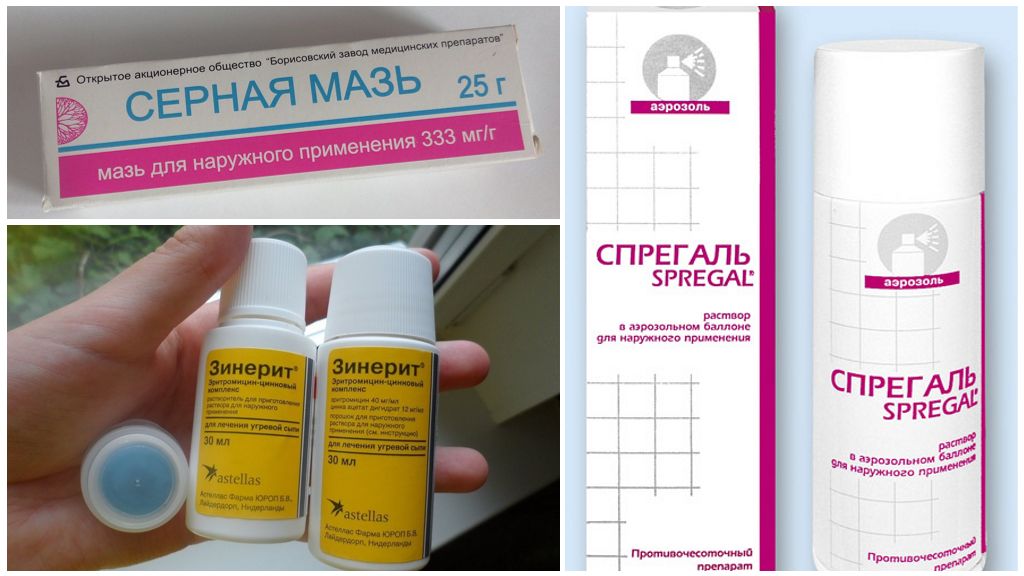
Demodecosis Therapy carried out at home after prior consultation with a specialist, confirmation of the diagnosis.
Assign:
- broad-spectrum antiparasitic drugs;
- antibiotics when attaching a secondary infection;
- probiotics to restore intestinal microflora, normalize the digestive tract, strengthen immunity;
- tablets, ointment for strengthening blood vessels;
- immunostimulants, immunomodulators for serious violations of the immune system;
- hormonal drugs, if the problem is associated with an imbalance in hormones.
Preparations for the destruction of subcutaneous flare are prescribed in the form of ointments, creams.
- Spregal. A remedy for the treatment of scabies in children, adults. Used in the treatment of demodicosis. Spray aerosol with a thin layer in the evening, closer to night. Make sure that the drug does not get on the mucous membranes of the nome, mouth, eyes.Therapy lasts about 10 days. Before active use, you need to do a sensitivity test. The cost of the drug is about 1000 rubles.
- Zinerite. A medicine for the treatment of acne, acne. Normalizes the sebaceous glands, improves the condition of the skin. Composed of zinc and erythromycin. The antibiotic should be applied in the evening with a thin layer. After some time, the gel forms a thin, invisible film. The price is about 800 rubles., Dispensed without a prescription.
- Sulfuric ointment. One of the most effective means in the fight against subcutaneous ticks. It is allowed to apply no more than 10 days, since the aggressive effect of sulfur on the skin of a woman can cause a kind of burn, peeling, redness. Apply a thin layer in the evening. Wound healing is observed for several days. A contraindication is the presence of an allergic reaction to the components. It is allowed to use during pregnancy. Price from 200 rub.
Important!
Drugs are prescribed individually, depending on the degree of damage, localization places. If a tick lives in the nose, it is forbidden to use local ointments. Therapy is carried out with antibiotics, which the doctor selects. There are treatment features when demodicosis of the eyelids.
Treatment with folk remedies

Preparations made by folk recipes, allow you to relieve inflammation, reduce itching, burning - external manifestations of the disease, but do not solve the problem, do not destroy the subcutaneous tick.
- Dilute aloe juice in equal proportion with cool water. Moisten a swab or gauze, wipe your face several times a day.
- Fresh cabbage juice relieves the external manifestations of demodicosis, creates unfavorable conditions for it - it dries the skin, normalizes the sebaceous glands. Squeeze juice, moisten gauze, apply to face until dry. You need to do 20 procedures per day. The duration of therapy is at least 14 days.
- Pour linden flowers with boiled water, insist 30 minutes. Use herbal balm to wipe the skin. The procedure needs to be done about 4 times a day. A very effective remedy at the stage of the onset of the disease, and also helps to withdraw an already established parasite in combination with other medicines.
In addition, vitamins should be taken, lead a healthy lifestyle, monitor nutrition, facial hygiene. Do not use cosmetics or skin cleansers with chemical components during therapy.
Reviews on the effectiveness of the treatment of demadecosis
Getting rid of a subcutaneous tick is not limited to ten days; demodecosis cannot be cured only by acting on a parasite; the treatment approach should be comprehensive.
Appointed ointment Flucinar for 5 days. While being treated, the problem disappears. After a week, itching, burning, redness again. I have been fighting demodicosis for six months now. There are no special shifts. Recommended to treat inflamed areas with tincture of calendula, it helps slightly. I think to try ointment Yam or benzyl benzoate.
Alina, Moscow
Demodecosis is not treated, but healed. After antibiotics, relief does not occur for long. Just a couple of weeks - again a rash, a long treatment. Sulfur ointment helps for a maximum of 10 days. I was helped to cope with Roaccutane disease. I took capsules. Not completely cured, but no relapse for 3 months, which is very pleasing.
Marina, Tver
Washed in tar soap with demodicosis. This remedy is safe with proper treatment, does not cause side effects, and helps a lot. Got rid of a subcutaneous tick in 2 weeks. Oily skin from birth, have to suffer all my life.
Veronika, Voronezh
A subcutaneous tick on the face causes not only physical discomfort, but also social discomfort. Unpleasant rashes make a person insecure, while others are forced to stay away from the victim as far as possible. It is impossible to let everything go by itself, it is only necessary to carry out treatment of demodicosis.
